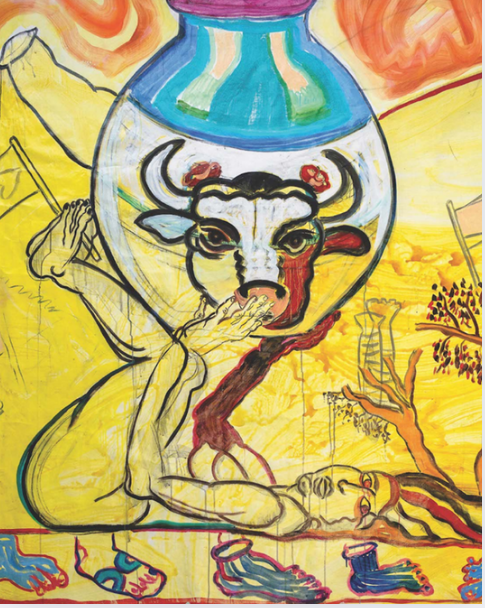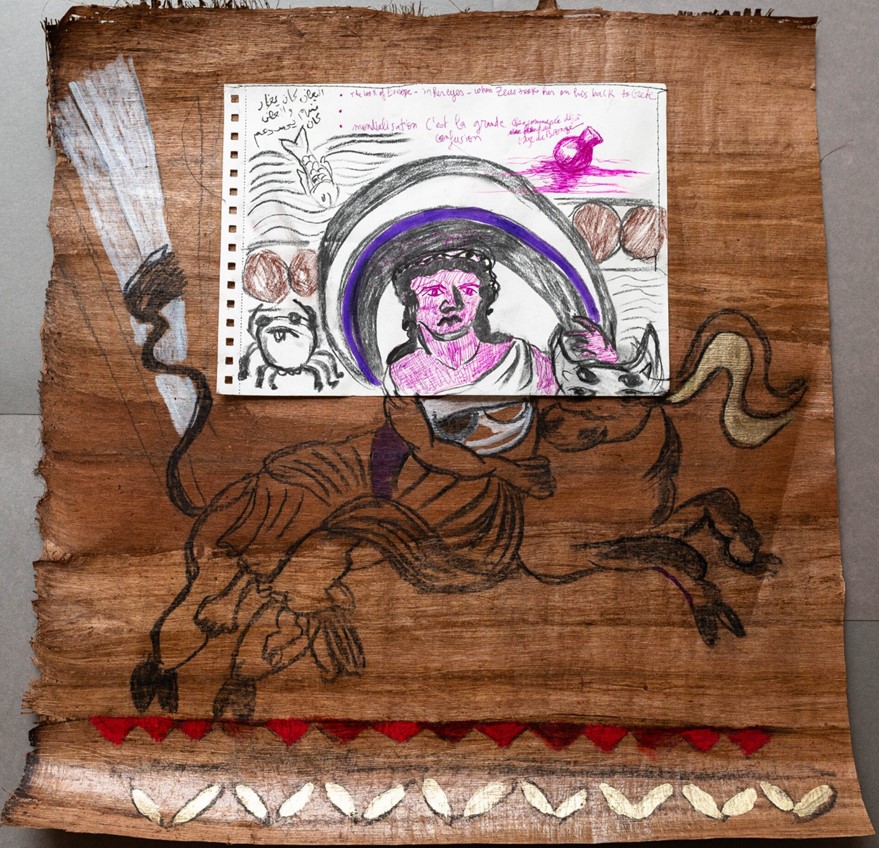Search
In recent years, Europe has been the focus of socio-political events that have dangerously revived the spectres of the “Old Continent”, bringing to the fore a multiplicity of tensions that once again call into question the historical, geographical and political dimension of this multi-defined space, highlighting the need for a new reflection on Europe’s historical dichotomy between violence and utopia.
Designed to accompany the release of issue #21 of Studiolo magazine, whose dossier will be devoted to this theme, this seminar invites us to update our critical thinking on Europe in the arts, by encouraging transdisciplinary dialogue and favoring readings that highlight the complex and contradictory nature of a space and an imaginary world in perpetual transformation.
The event will take place in two stages: a first seminar on 27.10.2025, and a second on 3.12.2025.
October 27 program
Europe in the maps and writings of Opicino, Sylvain Piron
During the 1330s, Opicino de Canistris, scribe to the popes of Avignon, produced a unique collection of maps, texts and drawings that continue to intrigue and fascinate contemporary scholars and artists. These private documents, which helped him overcome a serious psychological crisis, use the term Europe with a frequency unmatched by any other medieval author. He perceived it less as a geographical notion than as a cartographic entity, endowed with different values and potentialities. Always seized in the face of Africa, it is engaged in a confrontation of spiritual and material worlds, mediated by the Mediterranean from which monsters emerge.
Sylvain Piron, Director of Studies at EHESS, navigates the intellectual and religious history of the Western Middle Ages. His publications include Dialectique du monstre. Enquête sur Opicino de Canistris, Zones sensibles, 2015, translated in 2019 by Adelphi.
3 pm
In French
The horizon of horizontal art history, Jérôme Bazin
A distant cousin of the women of Opicino de Canistris, theEuropa Regina of the 16th century places a great deal of emphasis on Eastern Europe, which forms the core of the queen’s body. This talk will present a number of images from this part of Europe: the gentle madness of Bulgarian drawings of European society in the 1890s, the stubborn repetition of a map background in folk Poland, or the intriguing photographs taken by the Pole Wojciech Zamecznik during his travels in Bulgaria, Albania, Italy and Germany. We’ll be asking ourselves what place we can give to Eastern Europe when we no longer want to see it as a laboratory or a terrain that is incompletely European.
Jérôme Bazin works at the University of Paris-Est Créteil. His research focuses on art and architecture in different twentieth-century communist contexts. He has published, for example, “Realism from Italy – socialism from Eastern Europe. The sense of place in the 1950s”, Predella. Journal of visual arts, n. 52, 2022.
4:15 pm
In French
December 3 program
The myth of Europe and the arts, Jana Graul
The story of Europa, a Phoenician princess kidnapped by Zeus and taken to Crete to become the ancestor of the powerful Hellenistic dynasties, was already widespread in the Greek world when she appeared in the 5th century AD.e century BC as the founding myth of the continent that bears the same name. Since then, and right up to the present day, the mythological figure and the continent have been linked by changing conjunctures and have taken on different faces. This talk will address one of the common threads linking myth and continent: the link between Europe and the arts. It will also examine the role played by art in the “European imaginary”.
Jana Graul is an art historian who teaches at the University of Hamburg. Her research focuses on art and artistic theory in the early modern period, with particular reference to ethical issues. She is currently writing a book on Europe and the arts.
15h
In French and Italian
Dancing with myth, Mounira Al Solh and Alessandro Gallicchio
This paper is the result of a conversation between art historian Alessandro Gallicchio and artist Mounira Al Solh around the immersive project “A Dance with her Myth”, presented in the Lebanese pavilion at the 60th Venice Biennale in 2024, and its updating as part of the exhibition “Mounira Al Solh: A land as big as her skin” at Maastricht’s Bonnefanten Museum. Focusing on the question of the myth of Europe, this exchange will address the issues of the great mythological narratives, collective memory and recent political developments involving Europe and its imaginations.
Mounira Al Solh lives and works between Beirut and Amsterdam. She studied painting at the Lebanese University of Beirut, then Fine Arts at the Gerrit Rietveld Academy in Amsterdam, before becoming a resident at the Rijksakademie in Amsterdam. Her work explores several media: video, installation, painting, drawing, embroidery and performance. Wielding irony and introspection, her works address political and feminist issues, as well as emerging forms of micro-history, sometimes in a roundabout way.
Alessandro Gallicchio is Director of the Department of Art History at the Académie de France in Rome – Villa Medici, and pursues his research in line with the methodologies developed by the social and political history of art. His current research focuses on the relationship between art, architecture and urban space in the Mediterranean and the Balkans.
4:15 pm
In French and Italian

